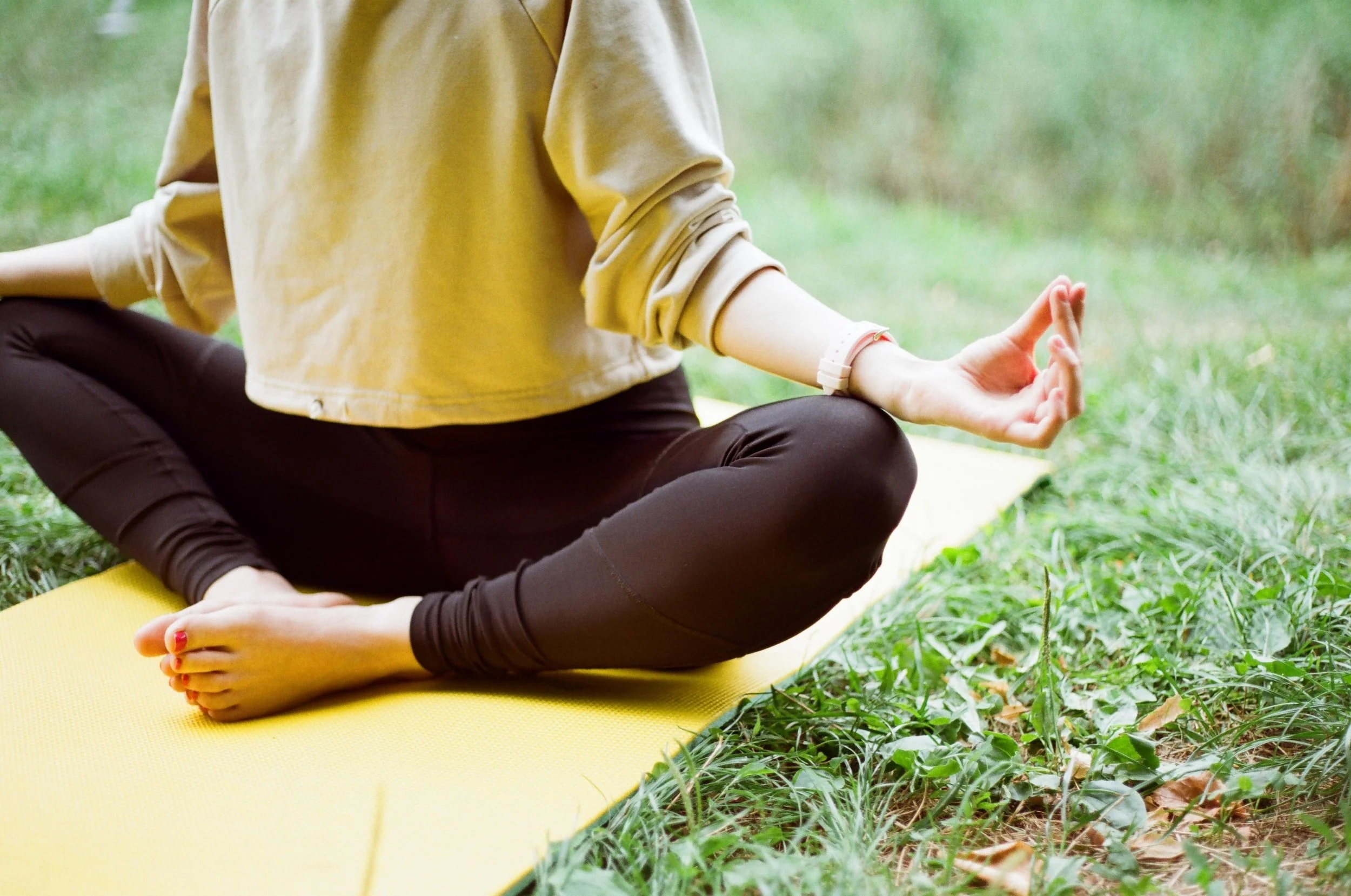Choosing The Right Yoga Course
This article offers a short guide on how to choose a course that’s right for you. The article covers:
What type of course is right for me?
Course duration and location
How can I judge if a course is good or not?
What should I expect to get out of a course?
Online or in person?
How much should I expect to pay?
Final thoughts
What type of course is right for me?
Choosing the right yoga course isn’t easy. The internet is a big, big place and maybe you’re torn between something close to home, or an exotic location. Perhaps you’re keen on doing a course a friend has done and recommended; or one that you saw online. So how and where do you start, to make sure you end up with an experience you’ll treasure? If you already have a clear vision, great! If not, read on…
One of the first things to consider is your motivation for doing a course. What is it that’s driving you? Is it that you love yoga and want to learn more about what’s behind it? Do you want to go deeper into your practice? Are you looking to become a yoga teacher one day? Or looking for a retreat-like experience? Perhaps you’re already a yoga teacher and want to add to your resume and teaching skills? Whatever it is, knowing your motivation will go a long way towards getting you on the right road. If you’re not sure what your motivation is check out the characters here to get a feel for who you are and what might excite you.
Knowing your motivation - eg, to deepen your yoga practice - will make it easier to know if a course is right for you. Because you will then search for courses by practice type (in this example) like “yin yoga”, “vinyasa”, “meditation”, etc. And you will know to look for courses that offer lots of yoga practice in their content, such as courses that offer daily classes and workshops, that breakdown the techniques you’re wanting to learn more about, and that offer you insight and feedback into perfecting them.
Course duration and location
Now you need to decide how long you want the course to be and where you should do it. The first of these - course length - will be guided by both the subject you are wanting to explore and how deep you want to delve. If the subject is somewhat familiar to you; you’ve already done some study or practice in it; it's an introductory course; or, if the subject has a narrow scope of focus, a short course like a one-day course or even a workshop of a few hours might be perfect for you.
However, if you are exploring a subject with a wide scope; the subject matter is new to you; or you want to comprehensively investigate it, then a longer course is needed. If your motivation is to teach, then perhaps an even longer course is necessary as it will need to include appropriate sessions where you work on your teaching practice and execution. If you are looking to go deeper, then don’t be put off by longer courses. Even if you are time poor there will be options for you, like studying part-time or achieving your qualification by accumulating credit points over multiple modules (similarly to how a university degree is an accumulation of credits from a wide range of chosen subjects across various levels of complexity).
With yoga, this latter option is often even an advantage, because it gives you time between modules to put into practice and absorb the techniques you have been studying.
Now, where should you do your course? There are lots of factors that feed into this decision, not the least of which is that you can find yoga courses in all sorts of exotic locations. As tempting as it might be to study in a tropical paradise it is always better to choose quality and the right fit for you, over location. The exception to this might be if your main motivation is for a retreat-like experience, where you can get away from it all and simply be in your bubble.
Some key things we recommend you consider regarding location are:
if the course is far away you need to also factor in the cost and time of travel compared with doing a course in your home city
if you do your course far away is it possible to ensure that you can reference check it for quality, verses checking out the venue and trainers beforehand if its close by
will you have access to your teachers beyond the course if it’s far away verses close to home
How can I judge if a course is good or not?
Most of us are quite familiar with how internet reviews and ratings work, so we will use this section to discuss other ways in which you can find out if a course is of high quality or not. Firstly check if the organisation and its trainers have appropriate experience, qualifications and registrations to be running the courses they are advertising. Whilst formal qualifications are no guarantee of quality, the level of training and experience your trainers have give you a strong indication of what they will bring to your education. Look also at the specific areas of experience and training they have. For example, if you want to study Yin Yoga you want a specialist in that area, not a teacher whose main experience is in vinyāsa, for example.
Is the school / organisation registered with any professional bodies? Like most professions (eg, law, accounting, etc) yoga has various professional registry organisations, such as Yoga Alliance, Yoga Australia, etc. If you plan to teach yoga in the future or are a registered yoga teacher yourself then you will want to study with a Registered Yoga School (RYS). Achieving certification with a RYS means you can use that qualification for your own registration or continuing education. Whilst not as rigorously standardised and audited as the professional bodies for lawyers, accountants, etc; RYS trainers must nevertheless submit detailed curriculums covering key learning outcomes in order to become registered and recognised by their various professional bodies.
Can you speak directly with the trainers prior to signing up? A training course can be a significant monetary investment. So make sure you have the ability to talk with your potential trainers directly, not just though email. This could be via phone; or these days, via an online virtual meeting. Don’t be afraid to contact the school and ask if you can speak directly with the trainer/s. Websites can only outline so much information; whereas a short conversation, in person, can convey so much more - especially in terms of “energy”. In other words, how you feel about the person in terms of whether they are a good fit for you. These conversations also give you the chance to ask questions specifically related to your personal needs and goals regarding the course.
Note; if you do wish to speak with someone directly be sure to email and ask if this is appropriate; give you reasons for wanting to chat; provide a contact number and some times that you are available to talk. Remember that course givers are busy too and deserve your respect as they are providing their time for you.
What should I expect to get out of a course?
We can look at this from two perspectives - what you should expect of your trainers and from the course material; and what you can do to ensure you maximise your experience.
From the first angle, obviously your course should provide you what is advertised. For this reason make sure that what is outlined in terms of content and subject matter is clear to you, and as comprehensive as you want it to be. If it’s unclear, contact the providers for more information.
The remainder of making sure you get what you pay for will come from a range of factors including: whether or not (and of what quality) the course resources provided to you are; the experience and qualifications of the trainers (as discussed in the preceding section); and the mix of subjects covered and how they are delivered (eg, theory components, practice components, etc) - a varied range of delivery methods is better because we all learn differently.
Finally, your experience will be effected by the skill of your trainer. This varies greatly and is another reason why you might want to chat with them personally prior to signing up. You can also refer to reviews from past attendees, especially if you know someone that has personally attended the course.
From the other side of the student / teacher dynamic you can get the most from your experience by: showing up on time and to all sessions; being “present” (ie, paying attention, being engaged with the material, your training, and your fellow students); doing any practices or other work required in the course; absorbing the teachings into your own yoga practice - you are your own “laboratory” for seeing whether the teachings work for you.
For those that wish to teach themselves, include what you learn into a daily self practice (called a sādhana in yoga). This is the most effective means of absorbing the learnings once you have left the course because ultimate insight, from a yoga perspective, comes from practice and self-reflection.
Online or in person?
Since the pandemic online courses have exploded in popularity and become “normalised.” But does this affect quality? The answers, as often, is yes, no, maybe?
Online courses certainly open up more options for the student as they are no longer bound by geography and the costs that come with travel. Because many online courses often have pre-recorded content, they are also cheaper to produce for the training school, and that might result in cheaper prices for the consumer - ie, you.
But yoga is an area of study that does benefit particularly from the exchange of “energy” that is present between two people, and more especially within a group (for non one-on-one teaching). This is something that most definitely suffers when a screen gets involved.
Depending on the subject matter though, online delivery might be quite appropriate - eg, for theory components of a course. The disadvantage though is that delivery via this manner is often devoid of the opportunity for conversation, as well as those other special moments of insight you get from chatting with a class mate or teacher during a break as you run down for a coffee. So be careful, if you are being offered online components, that they are still rich in two-way interaction.
The other problem with sessions delivered remotely is that, depending on your personality type, you might be prone to drift off, or be distracted by your personal environment - verses being much more focussed and present if you are in the same space as the teacher and your peers whilst the content is being delivered.
For courses that are geared more towards practice and learning to teach yoga, online is not very effective (in our opinion). When working with “bodies” we need the three-dimensional frame to see all that is going on - whereas screens are two-dimensional and only from one angle.
When you begin to learn to teach yoga practices you will also quickly become aware that teaching is a two-way conversation - you give an instruction and then the body (ie, student) responds. This affects what comes next, as the dialog moves forwards, interweaving to create that “magical” experience of energy exchange. You cannot achieve this through a screen.
How much should I expect to pay?
Does price equal quality? Again, yes, no, maybe? The reasons for this are partly explained by some of what has already appeared in this article; for example, how long the course runs for, what experience and skills your trainers offer, the resources provided, whether the course is offered in person or online, and the potential need to factor in travel and accommodation to the overall price of the course.
But what else affects price? In general economic terms we know that income and costs are not the same everywhere in the world. If you live in a relatively prosperous country then prices in less affluent economies may appear low to you. Likewise, if you live in a less affluent society - at least in terms of the world-value of your currency - then taking a course in another country might simply be cost prohibitive in real terms.
So how else can we decide if a course is “good” value or not and what we should expect to pay? There is one very simple method I use to make a judgement on this, especially if the course is taking place in my own country or one where there is a comparable exchange rate.
That method is to simply divide the course price by the number of contact hours. Why is this simple method useful? Consider this… what do various professions charge per hour? A psychologist - around $150-200/hr? A massage therapist - around $60-100/hr? A lawyer - $300-400/hr and upwards.
Now, what is the minimum wage in your city? Where I live it’s in the $20-25/hour range.
Considering the above, what is the price of the course you are deciding on and what does it work out to be per hour? Then, if it’s an in-peron, face to face course, what would you think would be a fair price for the presenter/s to expect for reimbursement of, not only their time with you, but also for the intellectual property they have developed are sharing with you. If you work it out and the price per hour is closer to the minimum wage than most other professions then you’re probably getting a pretty good deal.
That doesn’t mean that you won’t find a course cheaper somewhere else. But now you have this simple equation as a guide - plus all the other things we’ve discussed in this article from which to consider the quality of a course - to throw into the mix before you make your final choice.
Final thoughts
With all that we have laid out above, unless the subject matter is so unique that you cannot get it anywhere else, at the end of the day most of us will still make our decision on a gut/heart feeling. Is that a bad thing? I don’t think so. We are, after all, taking a journey towards the Self in any yoga course.
And if you’re already acquainted with your inner sage then perhaps the course is already written in your destiny.
For those that need a more logical and comparative process, then I hope this article has been helpful.
Love & Light
Jamie


